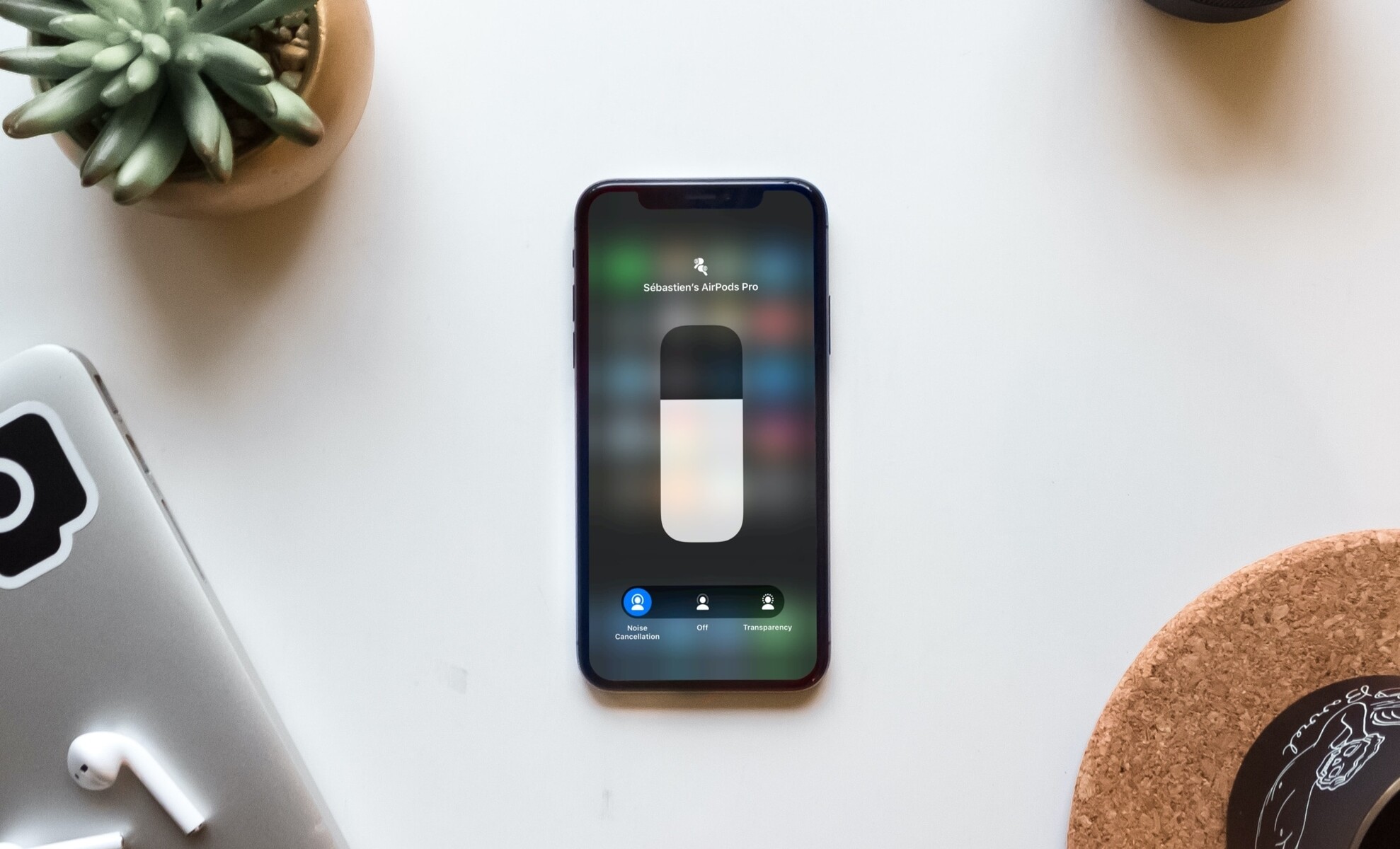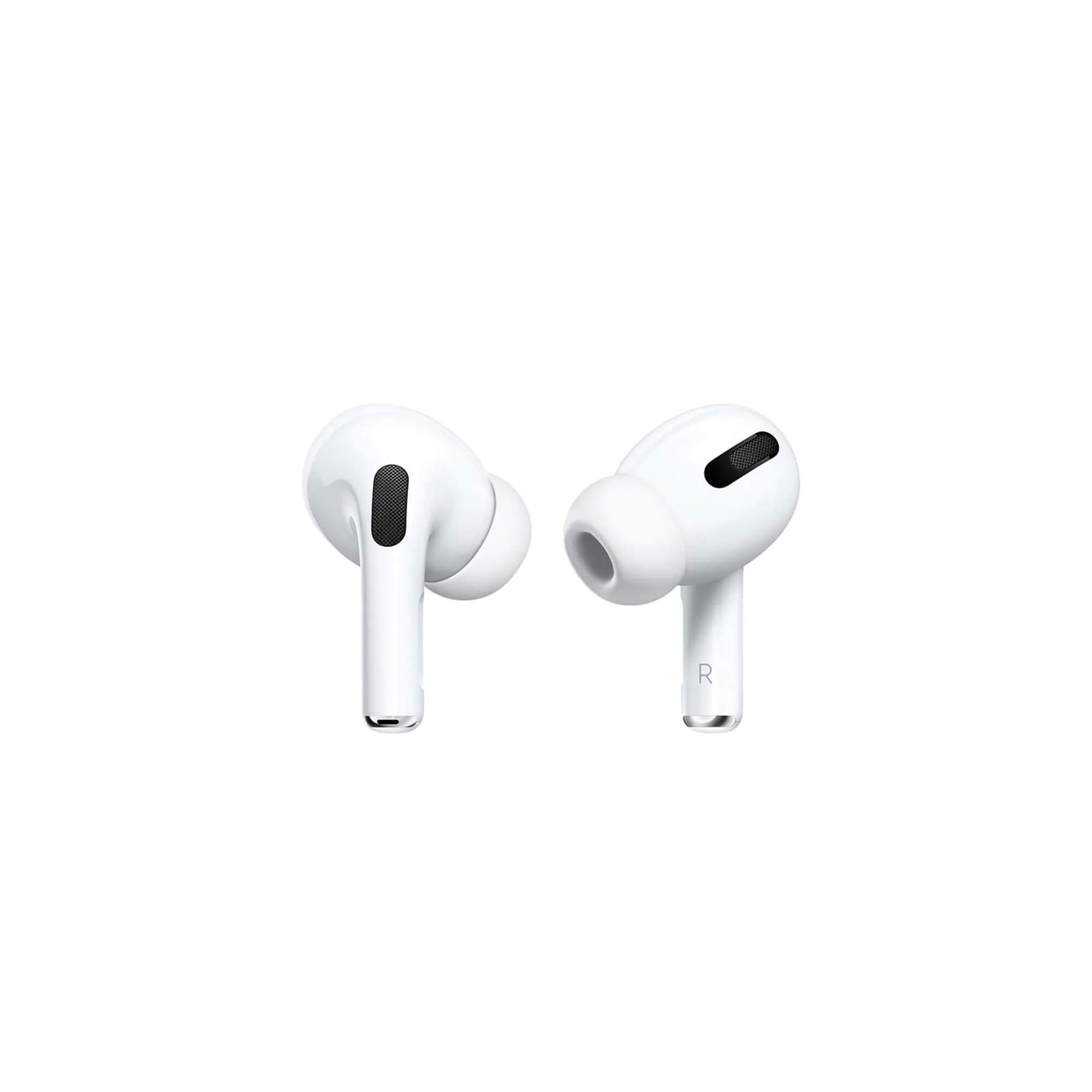Introduction
Noise cancellation and transparency are two commonly used features in modern technology devices, especially in headphones and earbuds. While both serve the purpose of enhancing the audio experience, they function in different ways and offer distinct benefits. Understanding the difference between noise cancellation and transparency can help you make an informed decision when selecting the right device for your needs.
Noise cancellation technology aims to eliminate or reduce unwanted external sounds, allowing you to enjoy your audio content without distractions. On the other hand, transparency mode enables you to hear surrounding sounds while still enjoying your music or calls. Each feature has its advantages and considerations, which we will explore in detail in this article.
In the following sections, we will delve into the workings of noise cancellation and transparency, highlight their respective benefits and drawbacks, and make a comprehensive comparison between the two technologies. By the end, you will have a clearer understanding of noise cancellation and transparency, and how they can enhance your audio experience.
Noise Cancellation
Noise cancellation is an innovative technology that allows you to enjoy audio content without the intrusion of unwanted external sounds. Whether you are on a crowded bus, in a noisy office, or traveling in an airplane, noise cancellation can create a serene and immersive audio experience.
So how exactly does noise cancellation work? Noise-cancelling headphones or earbuds utilize built-in microphones to detect ambient sounds around you. These microphones capture the external noises and analyze their frequency and amplitude. Once the device identifies the characteristics of the unwanted noise, it generates an “anti-noise” signal that is the exact opposite of the detected sound waves. When played simultaneously with the incoming noise, these two signals cancel each other out, effectively reducing or eliminating the external noise.
One of the main benefits of noise cancellation is its ability to immerse you in your audio content. By neutralizing background noises, you can focus on your music, podcasts, or phone calls without any distractions. This is particularly advantageous in environments where external sounds are loud or constant, such as in busy airports or bustling city streets.
Additionally, noise cancellation can have a positive impact on your overall listening experience. By reducing the need to raise the volume to overcome external noises, it helps prevent long-term hearing damage. It also allows you to discern finer details in your audio, improving the overall clarity and quality of the sound.
However, there are a few drawbacks to consider when using noise cancellation. Firstly, the technology requires a power source to operate, which means you will need to make sure your noise-cancelling device is charged or has access to batteries. Secondly, noise cancellation is more effective at blocking out constant or low-frequency noises, such as the hum of an airplane engine, than it is at eliminating abrupt or sudden sounds, like sirens or loud conversations.
Overall, noise cancellation is a valuable feature that can significantly enhance your audio experience and provide a peaceful environment for your entertainment or work. Whether you are a frequent traveler or someone who enjoys focusing on your audio in noisy surroundings, noise cancellation can be a game-changer.
How Noise Cancellation Works
Noise cancellation technology is an impressive feat of engineering that relies on advanced algorithms and precise microphone placement. The process involves several key steps that ultimately lead to the elimination or reduction of unwanted external sounds.
1. Microphone Placement: Noise-cancelling headphones or earbuds come equipped with built-in microphones strategically placed on their exteriors. These microphones capture the ambient sounds in your surroundings, picking up noise from all directions.
2. Soundwave Analysis: Once the microphones capture the incoming sounds, the noise cancellation system analyzes their frequency and amplitude. This analysis allows the device to distinguish between the desired audio and the unwanted noise.
3. Anti-Noise Generation: Based on the analysis of the ambient noise, the system generates an “anti-noise” signal. This signal is essentially an exact replica of the detected noise, but with inverted sound waves. The anti-noise is designed to cancel out the unwanted sound waves when played simultaneously with the incoming noise.
4. Mixing the Sound: The device mixes the anti-noise signal with the audio you are listening to. The processed sound is then propagated through the speakers or earbuds, reaching your ears along with the anti-noise signal.
5. Sound Cancellation: When the anti-noise signal combines with the ambient noise in your surroundings, the two sound waves interfere with each other. This interference leads to a cancellation effect, wherein the sound waves effectively neutralize each other, resulting in reduced or eliminated noise.
It’s important to note that noise cancellation technology primarily works best with continuous or low-frequency noises, such as the droning sound of engines, air conditioners, or background chatter. These noises tend to have consistent patterns, making them easier to analyze and cancel out using the anti-noise signal.
However, noise cancellation is less effective at attenuating sudden or transient noises, such as loud claps or abrupt shouts. These sounds have irregular waveforms and shorter durations, making it challenging for the system to precisely generate the necessary anti-noise signal in real-time.
Nevertheless, through careful microphone placement, extensive sound analysis, and synchronized anti-noise generation, noise-cancelling devices can provide an exceptional listening experience by significantly reducing unwanted external sounds.
Benefits of Noise Cancellation
Noise cancellation technology offers several advantages that enhance the audio experience and provide a more immersive and focused environment. Here are some key benefits of using noise-cancelling headphones or earbuds:
1. Reduced Distractions: By actively eliminating or reducing external noises, noise cancellation allows you to immerse yourself in your audio content. Whether you are listening to music, podcasts, or audiobooks, you can enjoy them without the disturbances caused by ambient sounds. This is especially beneficial in noisy environments such as airplanes, trains, or bustling offices.
2. Improved Audio Quality: Noise cancellation not only eliminates external noises but also enhances the overall audio quality. By reducing the need to increase the volume to overcome background sounds, noise cancellation helps to preserve the clarity and details in your audio content. You can experience a more balanced and immersive sound with fewer distortions.
3. Protects Hearing: In loud environments, people tend to raise the volume of their audio devices to compensate for external noises. This can lead to long-term hearing damage. With noise cancellation, you can listen to your audio at lower volumes without compromising on the clarity or missing out on important details. It helps to protect your hearing health in the long run.
4. Better Focus: Noise cancellation is particularly useful for individuals who require concentration in their work or studies. By blocking out distractions, it creates a more conducive environment for focus and productivity. Whether you are working in a busy café or studying in a noisy library, noise cancellation can help you stay immersed in your tasks without being disrupted by the surrounding sounds.
5. Enhanced Travel Experience: For frequent travelers, noise cancellation can be a game-changer. It allows you to enjoy your favorite movies, music, or podcasts during long flights or train rides without the constant hum of engines or the noise of fellow passengers. Noise cancellation can make your travel experience more enjoyable and relaxing.
6. Improved Communication: Noise cancellation can also benefit phone calls and video conferences by reducing background noise. It helps to ensure that your voice is heard clearly by minimizing the interference caused by external sounds. This can be crucial in professional settings or during important conversations.
Overall, noise cancellation technology offers a range of benefits that enhance your audio experience and provide a more peaceful and focused environment. Whether you are a music lover, frequent traveler, or someone who needs concentration in their work, noise-cancelling headphones or earbuds can greatly enhance your daily life.
Drawbacks of Noise Cancellation
While noise cancellation technology provides numerous benefits, it’s important to be aware of its drawbacks and considerations. Here are some potential limitations of using noise-cancelling headphones or earbuds:
1. Power Dependency: Noise cancellation requires a power source to operate. Most noise-cancelling devices rely on built-in rechargeable batteries or replaceable batteries. This means that you need to ensure your device is adequately charged or have spare batteries on hand to continue enjoying the noise-cancelling feature.
2. Increased Cost: Noise-cancelling headphones or earbuds often come at a higher price point compared to regular audio devices. This is due to the advanced technology and additional components required for noise cancellation. If you have a limited budget, noise-cancelling options may be more costly compared to non-noise-cancelling alternatives.
3. Sound Degradation: In some cases, noise cancellation can slightly degrade the overall audio quality. The technology works by analyzing and processing the incoming sounds, which may introduce a minimal amount of signal distortion. While this may not be noticeable to most users, those with highly trained ears or specific audio preferences may perceive a slight impact on sound quality.
4. Ineffectiveness with Certain Sounds: While noise cancellation excels at reducing constant or low-frequency background noises, it may be less effective at canceling abrupt or transient sounds. Sudden loud noises such as sirens, car horns, or clapping hands may still be audible despite using noise-cancelling devices. It’s important to set realistic expectations about what noise cancellation can effectively block out.
5. Isolation from Surroundings: The very purpose of noise cancellation is to block out external sounds. While this can be beneficial in certain situations, it also means that you may become less aware of your surroundings. This can be a safety concern, especially if you are walking on busy streets, exercising outdoors, or using noise cancellation in potentially hazardous environments.
6. Discomfort for Some Users: Noise-cancelling headphones or earbuds apply pressure to the ears to create a seal, which helps to block out external noises. However, this pressure can cause discomfort or fatigue for some individuals, particularly during long periods of use. It’s essential to find a noise-cancelling device that fits comfortably and is suitable for your personal preferences.
Despite these limitations, noise cancellation technology continues to improve, and many of these drawbacks have been significantly minimized in newer models. It’s important to evaluate your specific needs and preferences before deciding on using noise-cancelling headphones or earbuds, weighing the benefits against the potential drawbacks.
Transparency
Transparency mode is an increasingly popular feature found in many modern headphones and earbuds. Unlike noise cancellation, which aims to eliminate external sounds, transparency mode allows you to hear and engage with your surroundings while still enjoying your audio content. This provides a more balanced and immersive experience by combining your audio with the sounds of the environment.
Transparency mode works by utilizing built-in microphones to capture the ambient sounds around you. These microphones capture the external noises and transmit them to the device’s audio processing system. The system then mixes the incoming audio with the amplified ambient sounds and plays them back through the headphones or earbuds.
By blending the audio content and the surrounding sounds, transparency mode enables you to effortlessly switch between focusing on your audio and staying aware of your environment. Whether you’re walking on a busy street, waiting in a crowded area, or simply want to have a conversation without removing your headphones, transparency mode provides a convenient solution.
One of the key advantages of transparency mode is its ability to enhance your situational awareness. By allowing external sounds to reach your ears, you can stay alert to potential hazards, such as oncoming traffic or emergency sirens. This can be particularly useful during outdoor activities, commuting, or when traveling in unfamiliar places.
Transparency mode also enables you to communicate more effectively with others. By allowing ambient sounds and conversations to blend with your audio, you can have conversations without needing to remove your headphones or pause your audio content. This is especially valuable in social settings or during phone calls where maintaining a connection with the surroundings is important.
Additionally, transparency mode can provide a more natural listening experience. While noise cancellation can create a sense of isolation, transparency mode allows for a more open and realistic sound environment. This can be beneficial for musicians, audio professionals, or anyone who wants to experience audio in a more authentic way.
However, transparency mode does have a few limitations to consider. One of the primary drawbacks is that it may not completely replicate the natural soundscape. The amplified ambient sounds may lack some nuances and directional cues, leading to a different perception of the environment compared to not wearing headphones at all.
Furthermore, transparency mode may introduce a small delay in processing the sounds, leading to a slight latency between the actual sounds and what you hear through the headphones or earbuds. While this delay is usually minimal, it’s important to note that there may be a slight offset in real-time audio perception.
Overall, transparency mode provides a valuable feature that combines the benefits of audio immersion and situational awareness. By allowing you to hear your surroundings while enjoying your audio content, transparency mode offers a versatile and engaging audio experience in various contexts.
How Transparency Works
Transparency mode is a feature available in many headphones and earbuds that allows you to hear external sounds while still enjoying your audio content. This technology relies on a combination of built-in microphones and advanced audio processing techniques to deliver a seamless blend of the ambient sounds and your audio.
Here’s a breakdown of how transparency mode works:
1. Microphone Placement: Headphones or earbuds with transparency mode include specialized microphones on the exterior of the device. These microphones capture the sounds from the environment around you, including ambient noises, voices, and other audio cues.
2. Microphone Sensitivity and Filtering: The microphones are designed to be highly sensitive, picking up a wide range of sounds. However, the audio processing system in the headphones or earbuds applies filters to focus on the essential ambient sounds and filter out irrelevant background noise.
3. Audio Processing: The captured sounds are sent to the device’s audio processing system for real-time analysis. Sophisticated algorithms analyze the amplitude, frequency, and directionality of the incoming sounds to ensure accurate reproduction.
4. Amplification and Mixing: The audio processing system amplifies the ambient sounds captured by the microphones. At the same time, it mixes these sounds with the audio content you are listening to, such as music or podcast. This blending creates a seamless audio experience where the surrounding sounds and your audio are synchronized and adjustable in volume.
5. Playback: The mixed audio, which includes both your audio content and the amplified ambient sounds, is played back through the headphones or earbuds. The result is a balanced audio experience that allows you to simultaneously enjoy your audio and remain aware of your surroundings.
Transparency mode aims to replicate the natural sound environment while providing the convenience of wearing headphones or earbuds. By amplifying the ambient sounds and integrating them with your audio content, transparency mode creates a harmonious blend that enables situational awareness without compromising on audio enjoyment.
It’s important to note that the specific implementation and functionality of transparency mode may vary across different headphone models or brands. Some devices offer adjustable levels of transparency, allowing you to customize the degree of amplification of ambient sounds to suit your preferences. Others may employ advanced signal processing techniques to enhance the clarity and realism of the surrounding audio.
While transparency mode is a useful feature, it’s worth noting that it may not completely replicate the natural sound experience. The amplified sounds transmitted through the headphones may lack some spatial cues and nuances present in a real-life environment. Additionally, there might be slight latency due to the processing involved, resulting in a minor delay between the original sound and what you hear through the headphones.
Nonetheless, transparency mode provides a versatile and engaging audio experience, allowing you to strike a balance between enjoying your audio content and staying connected with your surroundings.
Benefits of Transparency
Transparency mode offers several notable benefits, making it a valuable feature in headphones and earbuds. By blending your audio with the sounds of the environment, transparency mode creates a unique listening experience that combines immersion with situational awareness. Here are some key advantages of using transparency mode:
1. Situational Awareness: Transparency mode enables you to stay aware of your surroundings while enjoying your audio. By allowing external sounds to reach your ears, you can remain alert to important cues, such as traffic or announcements. This is particularly useful when walking, cycling, or engaging in outdoor activities where staying attuned to your environment is crucial.
2. Communication: With transparency mode, you can have conversations without needing to remove your headphones or pause your audio. It allows you to listen to external voices clearly, making it easier to interact with others around you. This convenience is especially beneficial in social environments or during phone calls where maintaining a connection with the surroundings is important.
3. Natural Sound Experience: Transparency mode creates a more natural and immersive audio experience by blending the sounds from your surroundings with your audio content. This provides a more authentic reproduction of the real-world environment, enabling you to better appreciate the richness and depth of the soundscape.
4. Adjustable Awareness Levels: Many devices with transparency mode offer adjustable settings that allow you to customize the degree of amplification of ambient sounds. This flexibility ensures that you can strike the right balance between audio immersion and situational awareness based on your preferences and the specific environment you are in.
5. Improved Safety: By staying aware of your surroundings while using headphones or earbuds, transparency mode promotes safety. It allows you to hear important auditory cues and warnings, potentially averting accidents or hazards. This is especially relevant in busy urban areas, while traveling, or when engaging in outdoor activities.
6. Environmental Integration: Transparency mode allows you to better integrate your audio experience with your environment. Whether you want to enjoy the sound of nature during a hike or listen to music at a low volume while working in a shared space, transparency mode lets you engage with both your audio content and the surrounding soundscape.
Transparency mode offers a unique blend of audio immersion and situational awareness, making it a versatile feature for various scenarios. Whether you need to stay connected to your environment for safety reasons or simply want a more natural listening experience, transparency mode provides a valuable solution.
It’s worth noting that the effectiveness of transparency mode may vary depending on the specific device and the environment in which it is used. Factors such as microphone quality, signal processing algorithms, and external noise levels can affect the overall experience. Therefore, it’s important to consider the specific features and capabilities of your headphones or earbuds when assessing the benefits of transparency mode.
Drawbacks of Transparency
While transparency mode offers several benefits, it’s essential to consider its drawbacks and limitations. Understanding these potential drawbacks can help you make an informed decision when using headphones or earbuds with transparency mode. Here are some factors to consider:
1. Sound Quality: Transparency mode, by nature, mixes both your audio content and ambient sounds. As a result, the audio quality may be compromised compared to listening to your content without transparency mode enabled. The added ambient sounds can potentially diminish the clarity and overall fidelity of the audio experience.
2. Background Noise: Depending on the environment you’re in, transparency mode may amplify not only desired ambient sounds but also undesirable background noise. This can include sounds such as traffic, construction, or conversations in crowded areas. The increased volume of these sounds may hinder your ability to focus on your audio content.
3. Reduced Privacy: Transparency mode allows external sounds to be heard while wearing headphones, which means that others around you can also hear what’s playing in your headphones. This lack of privacy may not be suitable in certain situations, such as when listening to personal or confidential content in public spaces.
4. Limited Noise Reduction: While transparency mode enables you to hear your environment, it may not provide complete noise reduction. The level of noise control with transparency mode may not be as effective as using dedicated noise-cancelling headphones or earbuds. If you’re seeking to minimize external noise and focus solely on your audio content, transparency mode may not be the most suitable option.
5. Latency: In some cases, enabling transparency mode may introduce a slight delay in the audio signal. This latency occurs due to the processing and mixing of the external sounds with your audio content. Although the delay is usually minimal, it can be noticeable to some individuals, particularly when watching videos or engaging in real-time communication.
6. Device Dependency: Transparency mode is a feature that relies on the capabilities of the specific headphones or earbuds you’re using. Not all devices offer transparency mode, so if this feature is important to you, you’ll need to ensure that your chosen device includes it. Additionally, the quality and effectiveness of transparency mode may vary between different models and brands.
Overall, transparency mode has its limitations, and it’s important to weigh its drawbacks against its benefits. Consider your specific needs and preferences when deciding whether to utilize transparency mode or opt for alternative features, such as noise cancellation or ambient sound modes, to achieve your desired audio experience.
Comparison Between Noise Cancellation and Transparency
Noise cancellation and transparency are two distinct features found in headphones and earbuds, each serving a different purpose and providing unique advantages. Let’s compare these two technologies to better understand their differences:
Noise Cancellation:
– Function: Noise cancellation aims to eliminate or reduce external sounds by generating anti-noise signals that cancel out unwanted noise. It creates a more focused and immersive audio experience by blocking out distractions.
– Benefits: Noise cancellation provides a serene listening environment by minimizing the impact of background noises. It enhances audio quality, protects hearing by reducing the need for high volume levels, and improves concentration in noisy environments.
– Drawbacks: Noise cancellation requires a power source, is less effective at canceling sudden or transient sounds, and may introduce a slight degradation in audio quality. It can also provide a sense of isolation and may be less suitable for situations where situational awareness is necessary.
Transparency:
– Function: Transparency mode enables the blending of ambient sounds with your audio content, allowing you to stay connected with your surroundings while enjoying your audio. It promotes situational awareness and creates a more natural sound environment.
– Benefits: Transparency mode enhances your awareness of the environment, making it useful for outdoor activities or situations where staying alert is important. It allows for better communication, provides a more authentic sound experience, and offers adjustable levels of awareness.
– Drawbacks: Transparency mode may slightly compromise audio quality by mixing external sounds with your audio content. It can amplify background noise, reduce privacy, and may introduce a slight latency. It also does not provide full noise reduction like noise cancellation.
In summary, noise cancellation and transparency mode cater to different needs and preferences. Noise cancellation is ideal for creating a focused and immersive audio experience by actively reducing external noise. Transparency mode, on the other hand, allows for a more balanced audio experience by blending ambient sounds with your audio, fostering situational awareness and promoting better communication.
Choosing between noise cancellation and transparency depends on your specific requirements. If you prioritize blocking out external disturbances and fully immersing yourself in your audio, noise cancellation would be a suitable choice. However, if you value being aware of your surroundings while enjoying your audio, transparency mode offers a more versatile and natural listening experience.
Consider your priorities, the environments you’ll be using your headphones or earbuds in, and the level of comfort and awareness you desire when making a decision between noise cancellation and transparency mode.
Conclusion
Noise cancellation and transparency are two valuable features that offer distinct benefits in the realm of headphones and earbuds. Noise cancellation excels at creating a focused and immersive audio experience by actively reducing or eliminating external sounds. It provides a serene environment, enhanced audio quality, and improved concentration in noisy surroundings. However, it may require a power source, be less effective with sudden sounds, and can provide a sense of isolation.
On the other hand, transparency mode allows for a more balanced and natural audio experience by blending ambient sounds with your audio content. It fosters situational awareness, better communication, and adjustable levels of awareness. While transparency mode enhances your connection to the environment, it may slightly compromise audio quality and introduce background noise amplification.
When deciding between noise cancellation and transparency mode, it’s crucial to consider your specific needs, preferences, and the context in which you’ll be using the headphones or earbuds. If you prioritize a distraction-free experience and crave total immersion in your audio, noise cancellation is the way to go. However, if you value being aware of your surroundings, engaging in conversations without interruption, and experiencing a more natural sound environment, transparency mode is the ideal choice.
Ultimately, both features offer valuable enhancements to your audio experience, providing versatility and catering to different scenarios. Whether you’re a frequent traveler, an avid music lover, or someone who needs to toggle between focused listening and environmental awareness, finding the right balance between noise cancellation and transparency mode will enrich your audio journey and elevate your overall satisfaction with your headphones or earbuds.

























